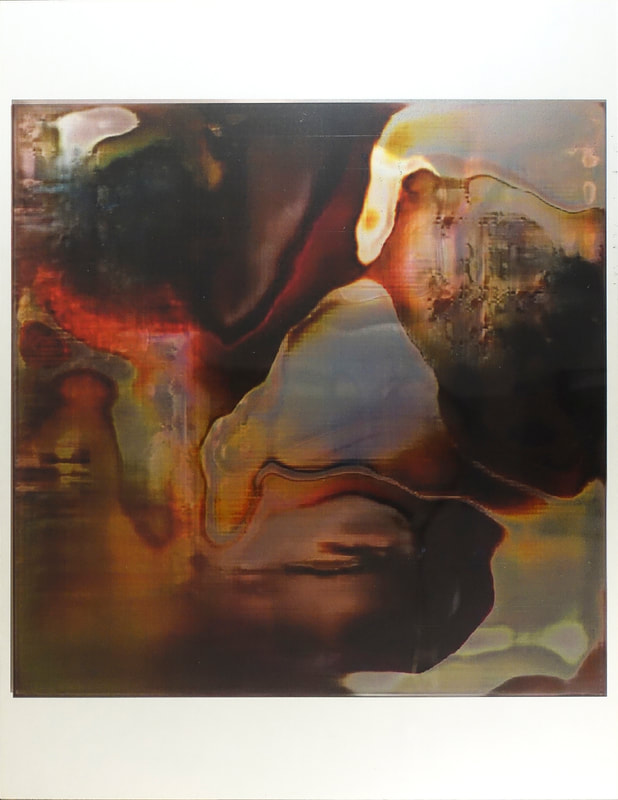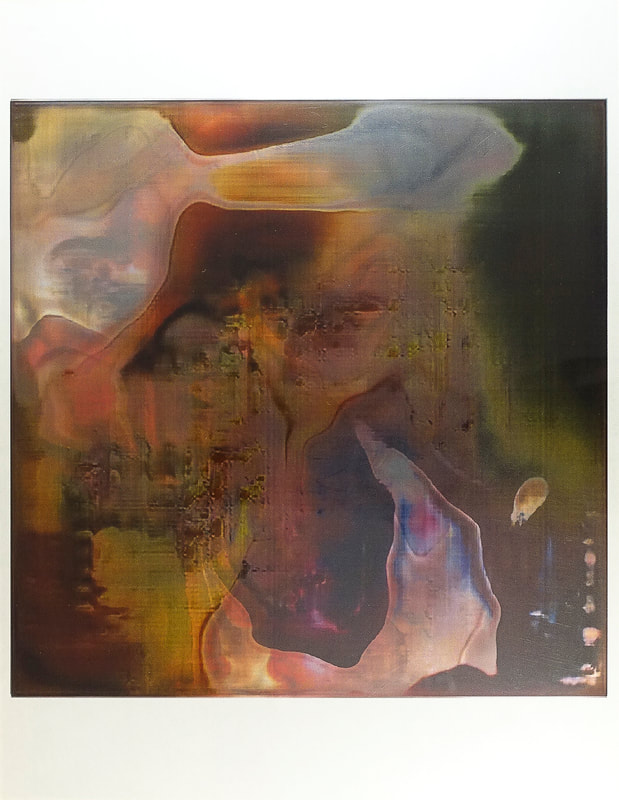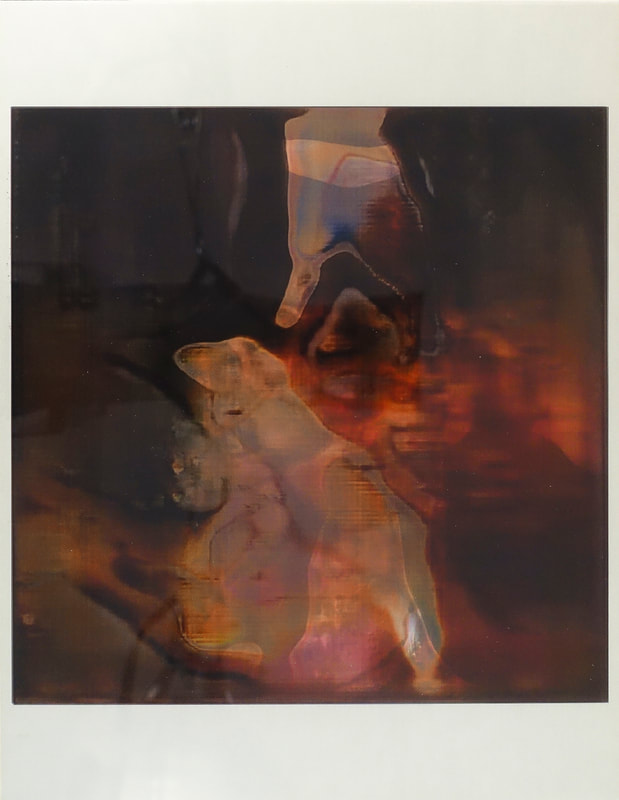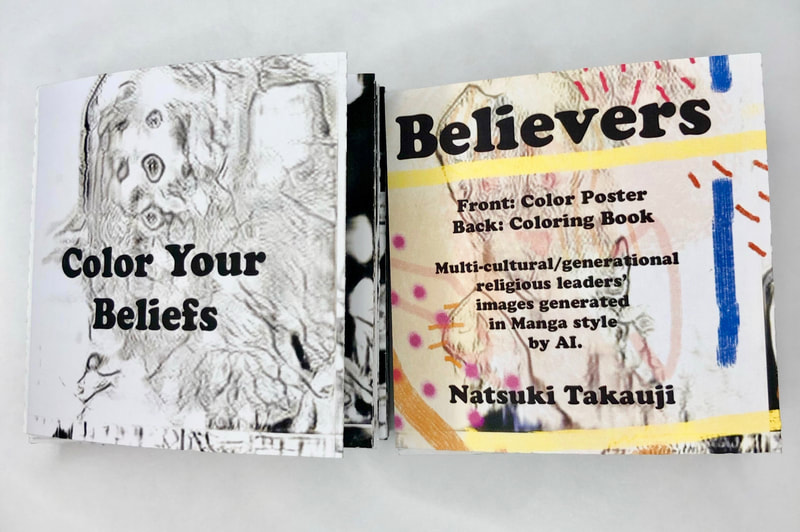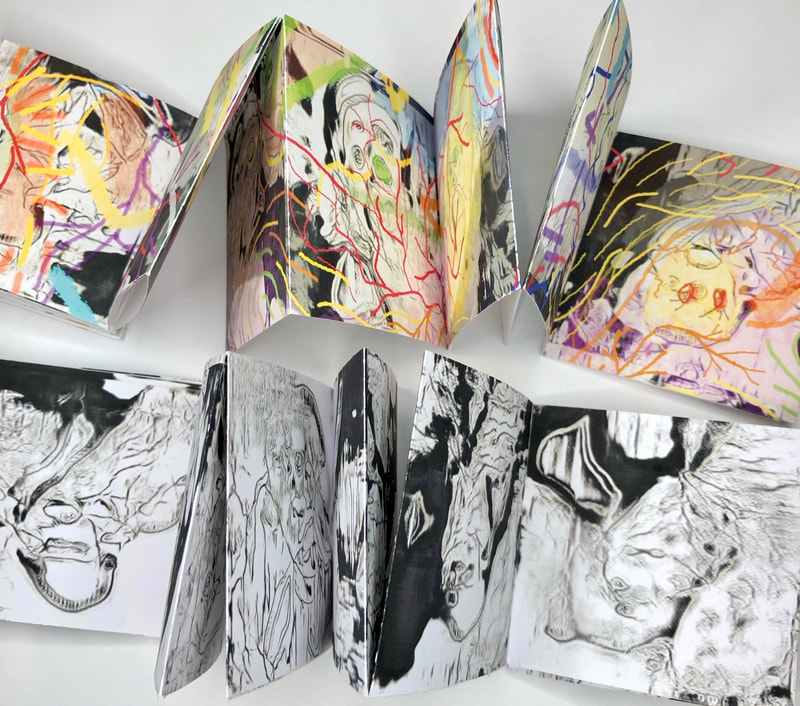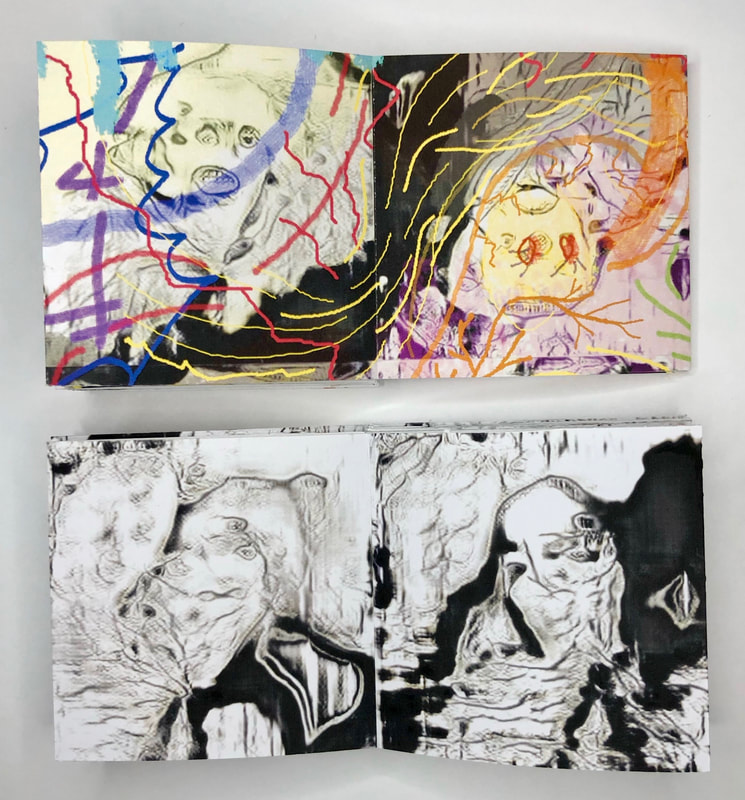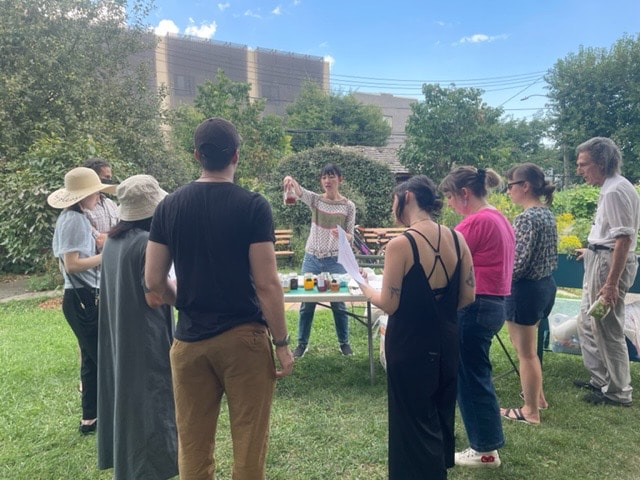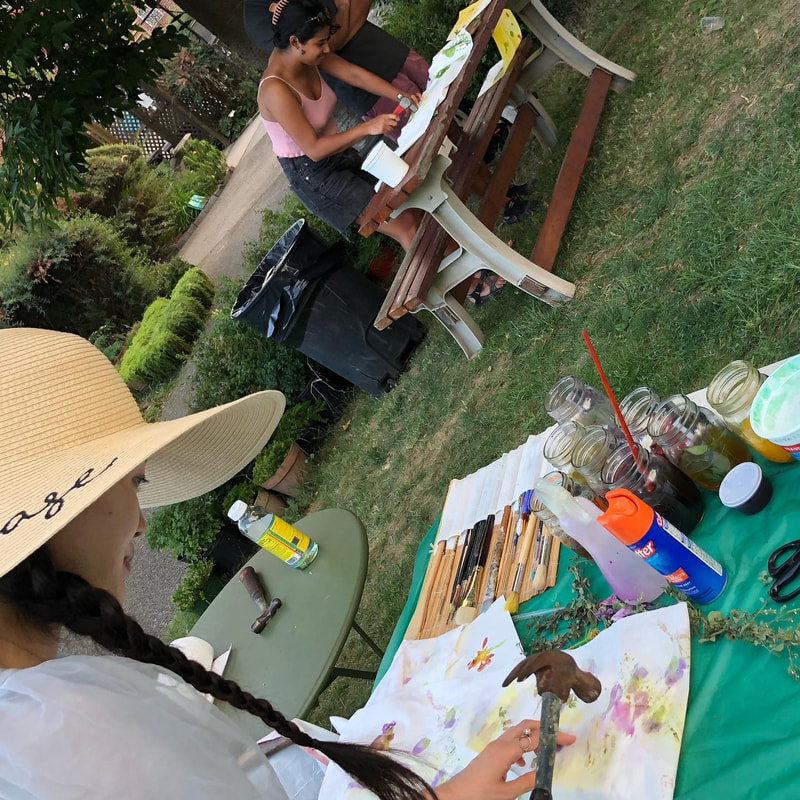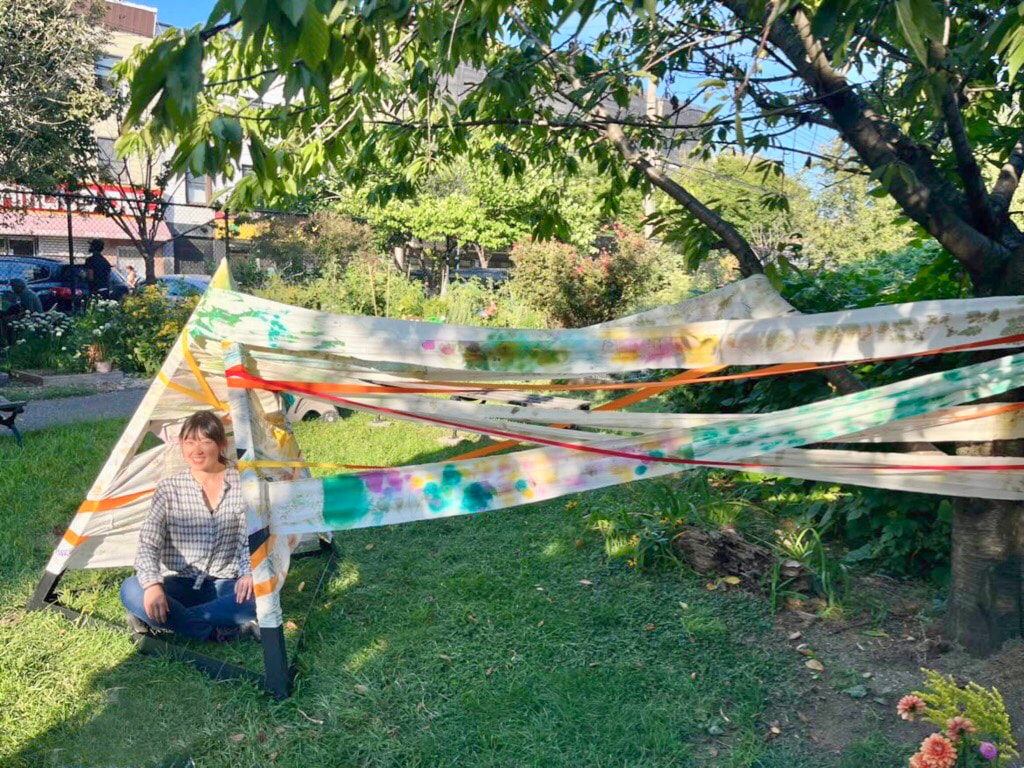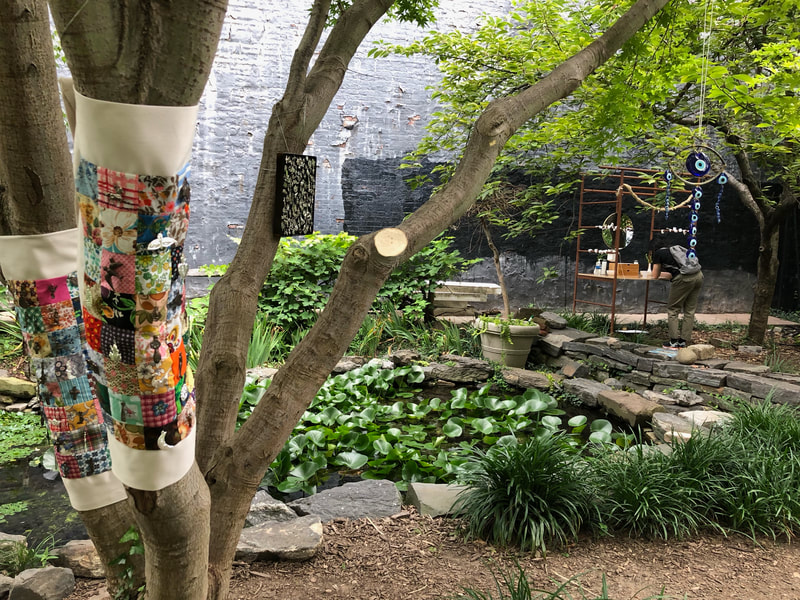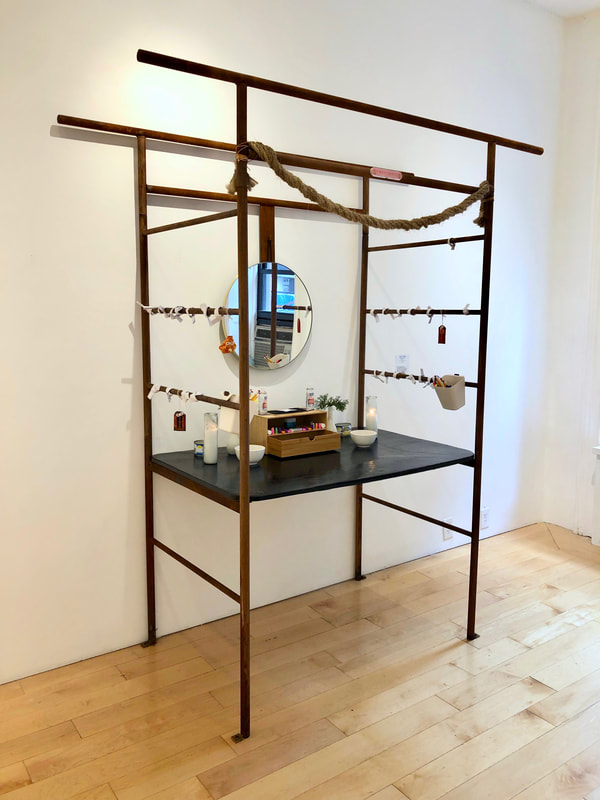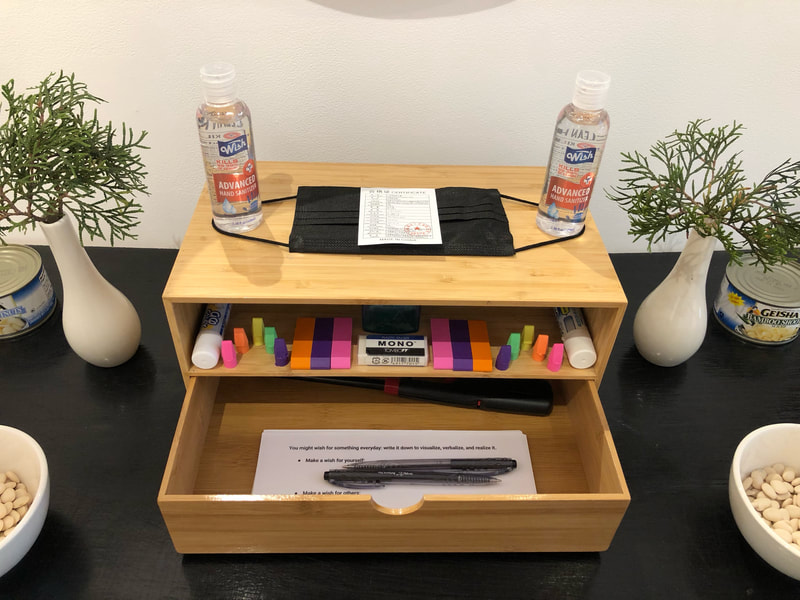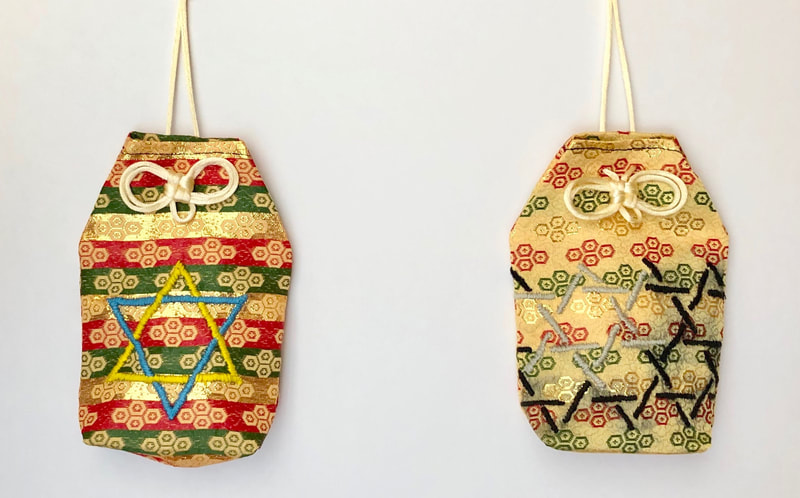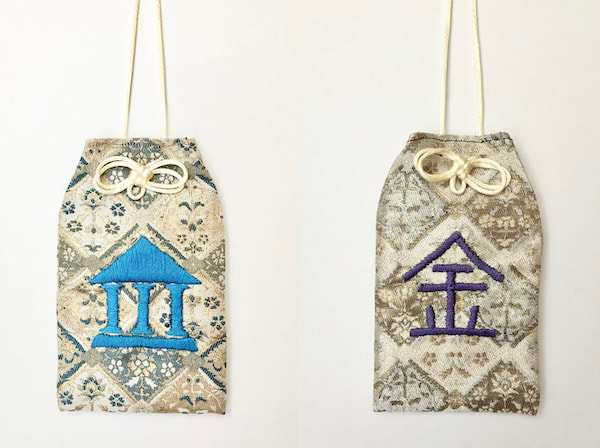Shin Project
The current state of the world with the pandemic has deepened my desire to examine the pre-existing values. Through the Shin Project, I started to explore the idea of our beliefs, which I always had concerned growing up; why we believe what we believe, how psychology and visual impression/expression are related, and how our narrative beliefs are affecting everything we do.
"Shin" can be written in various Chinese characters (in Japanese Kanji) meaning 信 belief, 真 truth, 神 God, 心 heart, 新 new, 芯 core, and more.
"Shin" can be written in various Chinese characters (in Japanese Kanji) meaning 信 belief, 真 truth, 神 God, 心 heart, 新 new, 芯 core, and more.
Believers
2022
9" x 12"
Laser print on paper and clear film
"The series Believers developed out of Takauji’s discomfort with organized religion. In the aftermath of World War II, Shintoism lost its status as Japan’s national religion. The ensuing religious void brought about many questions around spirituality for generations of Japanese people. This fostered Takauji’s desire to look inward and pursue the subjects of beliefs and social phenomena in her work.
She used AI to generate a set of photographs of leaders of a broad, multicultural, multi-generational cross-section of religious groups. While she found the AI results terrifying, she maintains that they visualize values that are deeply embedded in our society.
To create the final product, Takauji printed the images on paper and clear film, layering them in unlimited variations until desirable images were achieved. Each work compresses the individualities of multiple religious leaders – humans wielding power over their respective domains – into a single abstraction with a beautiful, mysterious depth. Religious power, along with its publicly dictated social morays, and political structure are stripped away to allow the participant’s direct and private contemplation of spirituality." -text by Kourosh Mahboubian
9" x 12"
Laser print on paper and clear film
"The series Believers developed out of Takauji’s discomfort with organized religion. In the aftermath of World War II, Shintoism lost its status as Japan’s national religion. The ensuing religious void brought about many questions around spirituality for generations of Japanese people. This fostered Takauji’s desire to look inward and pursue the subjects of beliefs and social phenomena in her work.
She used AI to generate a set of photographs of leaders of a broad, multicultural, multi-generational cross-section of religious groups. While she found the AI results terrifying, she maintains that they visualize values that are deeply embedded in our society.
To create the final product, Takauji printed the images on paper and clear film, layering them in unlimited variations until desirable images were achieved. Each work compresses the individualities of multiple religious leaders – humans wielding power over their respective domains – into a single abstraction with a beautiful, mysterious depth. Religious power, along with its publicly dictated social morays, and political structure are stripped away to allow the participant’s direct and private contemplation of spirituality." -text by Kourosh Mahboubian
Believers -Zine-
2022
H 18" W 12" / 3" x 3" when folded
Hand-painted and drawn or digital print on paper
As an extension of "Believers" series, Takauji created another set of AI images in Japanese Manga illustration style with spiritual leaders. Inspired by Asian screen panel painting, the zine can be folded to 3" x 3" and each page can be seen as an image, and when it's fully opened to 18" x 12", it creates a whole image. One is colored by the artist, another black/white version is a coloring book to be colored by the owner to "Color Your Beliefs".
This set of zine-painting can be purchased in unique hand-painted and drawn version. Digital print version is coming soon and please contact the artist to pre-order.
H 18" W 12" / 3" x 3" when folded
Hand-painted and drawn or digital print on paper
As an extension of "Believers" series, Takauji created another set of AI images in Japanese Manga illustration style with spiritual leaders. Inspired by Asian screen panel painting, the zine can be folded to 3" x 3" and each page can be seen as an image, and when it's fully opened to 18" x 12", it creates a whole image. One is colored by the artist, another black/white version is a coloring book to be colored by the owner to "Color Your Beliefs".
This set of zine-painting can be purchased in unique hand-painted and drawn version. Digital print version is coming soon and please contact the artist to pre-order.
Symbols
2021
H 37" W 44" D 4"
Steel, stainless steel, brass, bronze
Examining symbols across cultures and the most visible symbol for an individual.
H 37" W 44" D 4"
Steel, stainless steel, brass, bronze
Examining symbols across cultures and the most visible symbol for an individual.
Tree, Temple, and My Scarf
2022
H 5' W 4' L 4'
Steel and dyed fabric using plants from the Garden
At Two Coves Community Garden, the largest Green Thumb Garden in NYC, I did a natural dye workshop using plants from the garden; printing them onto the fabrics by pounding with hammers and painting with natural paints I made. 30 participants created 50 scarfs, and I sewed them together. The one long scarf is wrapped around the Cherry tree and the pyramid structure.
Historically the shape of a pyramid symbolized the meanings of life and death, heaven and earth, and the human body. Besides its function as tombs or temples meaning to express power and holiness, the practicality of the pyramid shape in architecture is essential to the human habitat. The tradition of wrapping the tree with fabrics is found in Asian countries like Japan, Thai, and India. It comes from the Buddhist belief that trees are sacred to be worshiped. This idea was also used by Buddhist monks in Thai to protest deforestation and pollution in 80’-90’; they wrapped their orange monk scarves on many trees and actually stopped the construction. By connecting the metal pyramid to the tree with fabrics providing a space to contemplate or meditate, I like to create dialogues about humans and nature, the spiritual and mundane world, and industrial and ecological structure.
This project is made possible by Queens Arts Fund New Work Grant of the Queens Council on the Arts with public funds from the New York City Department of Cultural Affairs, in partnership with the City Council.
H 5' W 4' L 4'
Steel and dyed fabric using plants from the Garden
At Two Coves Community Garden, the largest Green Thumb Garden in NYC, I did a natural dye workshop using plants from the garden; printing them onto the fabrics by pounding with hammers and painting with natural paints I made. 30 participants created 50 scarfs, and I sewed them together. The one long scarf is wrapped around the Cherry tree and the pyramid structure.
Historically the shape of a pyramid symbolized the meanings of life and death, heaven and earth, and the human body. Besides its function as tombs or temples meaning to express power and holiness, the practicality of the pyramid shape in architecture is essential to the human habitat. The tradition of wrapping the tree with fabrics is found in Asian countries like Japan, Thai, and India. It comes from the Buddhist belief that trees are sacred to be worshiped. This idea was also used by Buddhist monks in Thai to protest deforestation and pollution in 80’-90’; they wrapped their orange monk scarves on many trees and actually stopped the construction. By connecting the metal pyramid to the tree with fabrics providing a space to contemplate or meditate, I like to create dialogues about humans and nature, the spiritual and mundane world, and industrial and ecological structure.
This project is made possible by Queens Arts Fund New Work Grant of the Queens Council on the Arts with public funds from the New York City Department of Cultural Affairs, in partnership with the City Council.
Wish Daily
2021
H 84" W 48" L 32"
Steel, various commercial products
"Wish Daily" takes the forms from Shintoism and familiar commercial products. Visitors are invited to write their wishes about themselves and others, then hang it on the sculpture. Through this project, I question what's the difference between the individual and communal wishes, and also wishes made in sacred and domestic spaces.
TEXT on paper:
You might wish for something everyday: write it down to visualize, verbalize, and realize it.
Make a wish for yourself:
Make a wish for others:
H 84" W 48" L 32"
Steel, various commercial products
"Wish Daily" takes the forms from Shintoism and familiar commercial products. Visitors are invited to write their wishes about themselves and others, then hang it on the sculpture. Through this project, I question what's the difference between the individual and communal wishes, and also wishes made in sacred and domestic spaces.
TEXT on paper:
You might wish for something everyday: write it down to visualize, verbalize, and realize it.
Make a wish for yourself:
Make a wish for others:
Omamori / Lucky Charm
Omamori
2020
H 12" W 15" D 1.5" each
Fabric, wood, paper, gauche
It is inspired by a type of Japanese religious lucky charm called “Omamori”, which are commonly sold in Shinto shrines and Buddhist temples. I opened this small sac as a first time for this project because I was told that Omamori contains a prayer that brings good luck and it would lose its protective power if opened. I felt that I lost the sense of belief by seeing the reality.
I embroidered symbols indicating dual reality or hidden connections that highlight the irony and controversy inherent in society.Using both sides of the same fabric as a pair also reflects the inextricably linked objects, facts, or hypotheses. I enclosed an object in my Omamori to not to be seen or to be.
2020
H 12" W 15" D 1.5" each
Fabric, wood, paper, gauche
It is inspired by a type of Japanese religious lucky charm called “Omamori”, which are commonly sold in Shinto shrines and Buddhist temples. I opened this small sac as a first time for this project because I was told that Omamori contains a prayer that brings good luck and it would lose its protective power if opened. I felt that I lost the sense of belief by seeing the reality.
I embroidered symbols indicating dual reality or hidden connections that highlight the irony and controversy inherent in society.Using both sides of the same fabric as a pair also reflects the inextricably linked objects, facts, or hypotheses. I enclosed an object in my Omamori to not to be seen or to be.
"Charm for Health"
I embroidered two health logos which are widely used in America: Left is the rod of Asclepius (a deity of medicine), right is the caduceus (symbol of Hermes who is a deity of merchants). The modern use of the caduceus as a symbol of medicine became established in the United States in the late 19th as a result of documented mistakes, misunderstandings, and confusion.
"Charm for Prosperity"
I embroidered symbol of dollar and yin and yang. They coincidentally share S shape and a vertical junction, however, it might be not coincident that the yin and yang philosophy is frequently linked to business and money-making.
"Charm for Wealth"
I embroidered the symbol of the bank, and the Chinese character "金" meaning money. Their shapes coincidentally share triangular and vertical lines, however, it might not be coincident that banks play key roles in the modern monetary system.
"Charm for Protection"
I embroidered the symbol of the Japanese Kagome basket pattern and the Hexagram star symbol. Those star symbols are used in various religions and cultures from the ancient time. Coincidently, they share the meaning of protection sometimes. Kagome pettern originated from the eye shape, which was to scare the bad sprit away.
I embroidered two health logos which are widely used in America: Left is the rod of Asclepius (a deity of medicine), right is the caduceus (symbol of Hermes who is a deity of merchants). The modern use of the caduceus as a symbol of medicine became established in the United States in the late 19th as a result of documented mistakes, misunderstandings, and confusion.
"Charm for Prosperity"
I embroidered symbol of dollar and yin and yang. They coincidentally share S shape and a vertical junction, however, it might be not coincident that the yin and yang philosophy is frequently linked to business and money-making.
"Charm for Wealth"
I embroidered the symbol of the bank, and the Chinese character "金" meaning money. Their shapes coincidentally share triangular and vertical lines, however, it might not be coincident that banks play key roles in the modern monetary system.
"Charm for Protection"
I embroidered the symbol of the Japanese Kagome basket pattern and the Hexagram star symbol. Those star symbols are used in various religions and cultures from the ancient time. Coincidently, they share the meaning of protection sometimes. Kagome pettern originated from the eye shape, which was to scare the bad sprit away.
Lucky Charms
2021
Mixed-Media
Created with widely commercialized lucky charms across cultures, and the traditional process of wish-making, "handmade".




